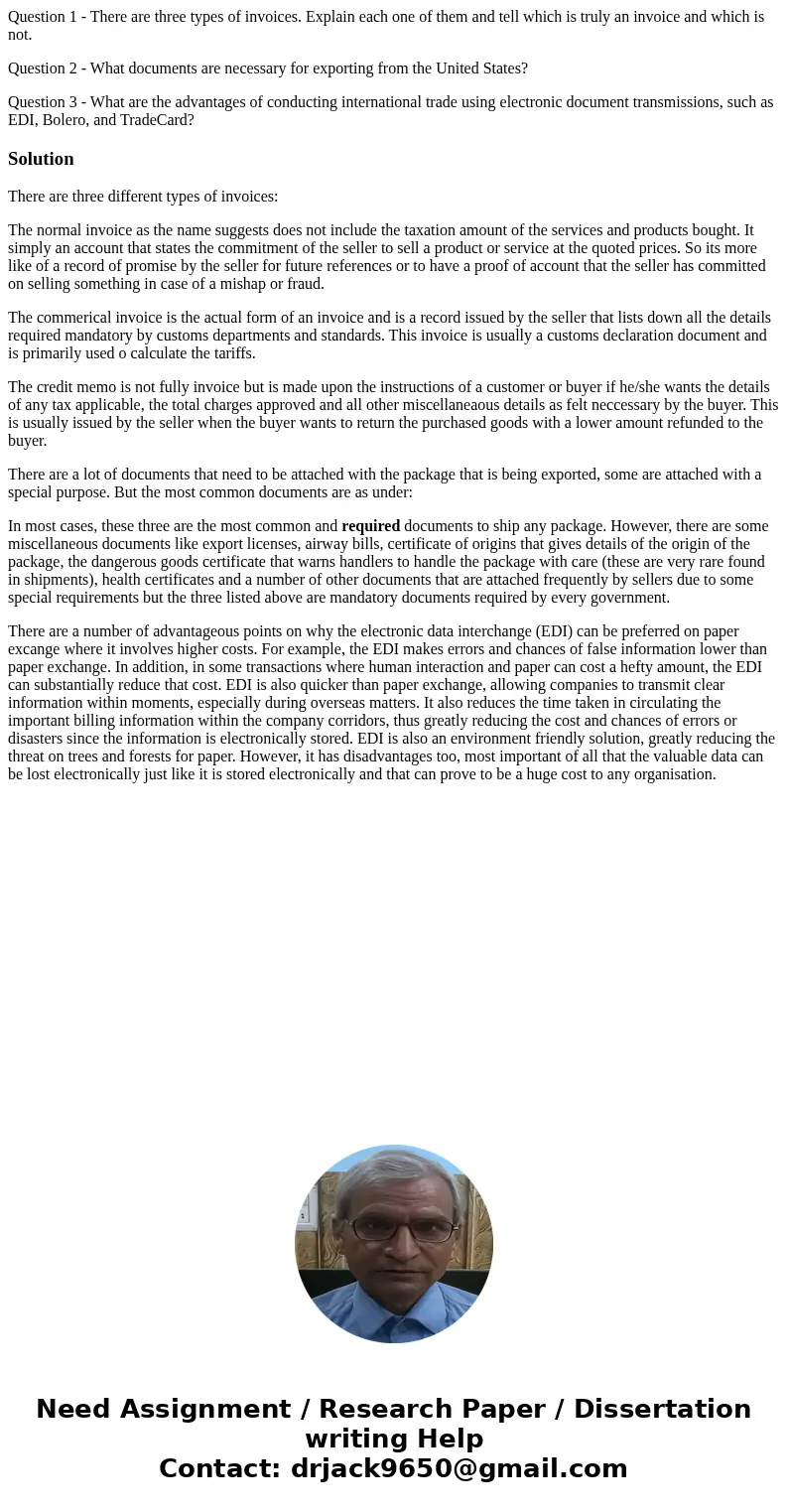Question 1 There are three types of invoices Explain each o
Question 1 - There are three types of invoices. Explain each one of them and tell which is truly an invoice and which is not.
Question 2 - What documents are necessary for exporting from the United States?
Question 3 - What are the advantages of conducting international trade using electronic document transmissions, such as EDI, Bolero, and TradeCard?
Solution
There are three different types of invoices:
The normal invoice as the name suggests does not include the taxation amount of the services and products bought. It simply an account that states the commitment of the seller to sell a product or service at the quoted prices. So its more like of a record of promise by the seller for future references or to have a proof of account that the seller has committed on selling something in case of a mishap or fraud.
The commerical invoice is the actual form of an invoice and is a record issued by the seller that lists down all the details required mandatory by customs departments and standards. This invoice is usually a customs declaration document and is primarily used o calculate the tariffs.
The credit memo is not fully invoice but is made upon the instructions of a customer or buyer if he/she wants the details of any tax applicable, the total charges approved and all other miscellaneaous details as felt neccessary by the buyer. This is usually issued by the seller when the buyer wants to return the purchased goods with a lower amount refunded to the buyer.
There are a lot of documents that need to be attached with the package that is being exported, some are attached with a special purpose. But the most common documents are as under:
In most cases, these three are the most common and required documents to ship any package. However, there are some miscellaneous documents like export licenses, airway bills, certificate of origins that gives details of the origin of the package, the dangerous goods certificate that warns handlers to handle the package with care (these are very rare found in shipments), health certificates and a number of other documents that are attached frequently by sellers due to some special requirements but the three listed above are mandatory documents required by every government.
There are a number of advantageous points on why the electronic data interchange (EDI) can be preferred on paper excange where it involves higher costs. For example, the EDI makes errors and chances of false information lower than paper exchange. In addition, in some transactions where human interaction and paper can cost a hefty amount, the EDI can substantially reduce that cost. EDI is also quicker than paper exchange, allowing companies to transmit clear information within moments, especially during overseas matters. It also reduces the time taken in circulating the important billing information within the company corridors, thus greatly reducing the cost and chances of errors or disasters since the information is electronically stored. EDI is also an environment friendly solution, greatly reducing the threat on trees and forests for paper. However, it has disadvantages too, most important of all that the valuable data can be lost electronically just like it is stored electronically and that can prove to be a huge cost to any organisation.

 Homework Sourse
Homework Sourse